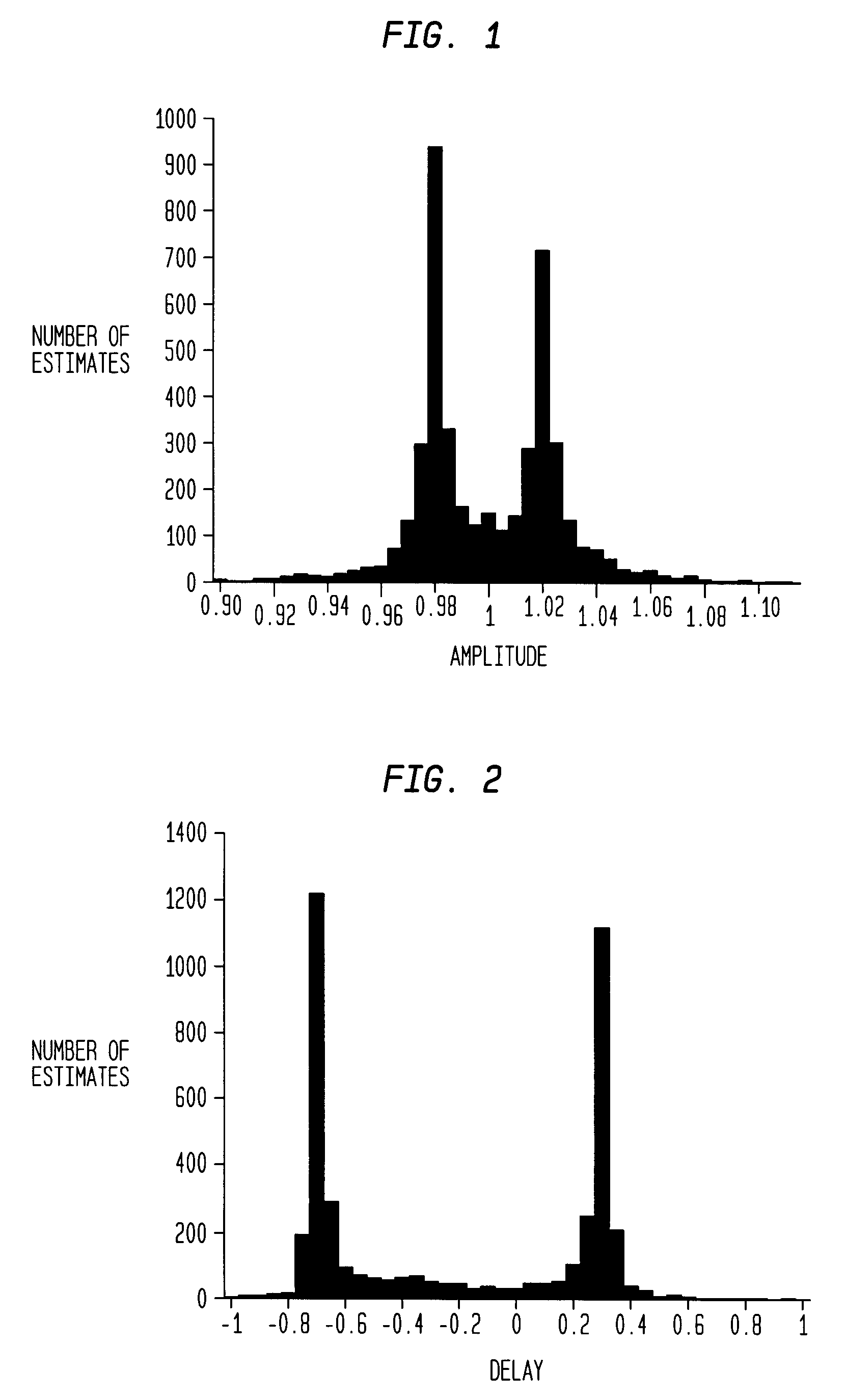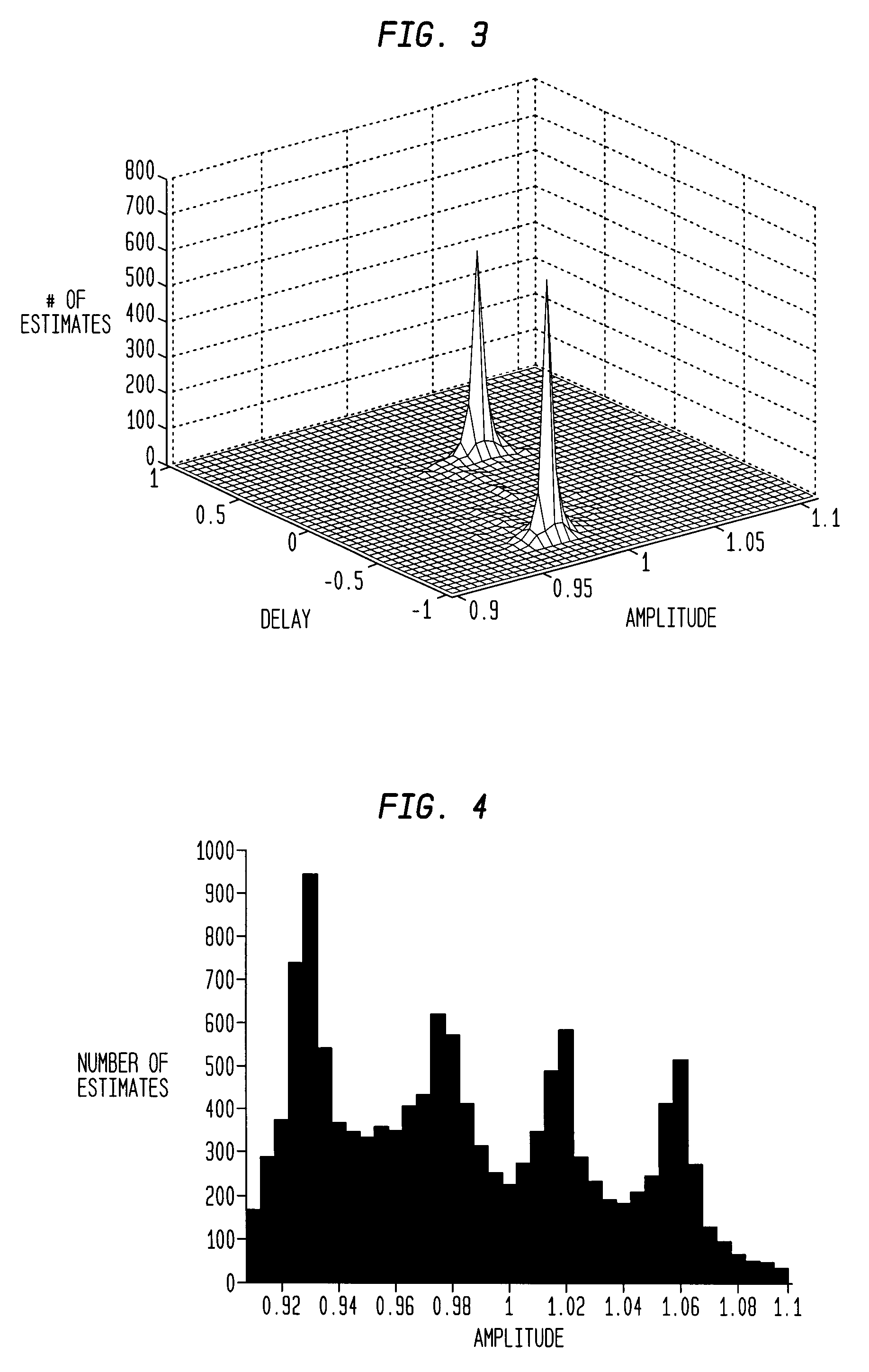Method and apparatus for demixing of degenerate mixtures
- Summary
- Abstract
- Description
- Claims
- Application Information
AI Technical Summary
Benefits of technology
Problems solved by technology
Method used
Image
Examples
Embodiment Construction
The best mode for implementing the present invention consists of two parts; 1) amplitude / delay estimation and 2) demixing. The first part clusters amplitude / delay estimates, each estimate made by frequency domain analysis of successive small time-windows of the mixture signals which determines both the number of source signals and the corresponding relative amplitudes and delays between them. The second part of the invention uses amplitude / delay estimates to demix the source signals via frequency domain partitioning over small time windows of one of the mixture signals. If the mixture consists of N sources, and N mixture signals are acquired, and the mixing matrix is of full rank, then the amplitude / delay estimates can be used for the mixing matrix inversion demixing, as described in the forenoted U.S. Ser. No. 60 / 134,655, instead of using the degenerate demixing part of the invention, if desired. Note, although in the preferred embodiment of the invention the estimates determined b...
PUM
 Login to View More
Login to View More Abstract
Description
Claims
Application Information
 Login to View More
Login to View More - R&D
- Intellectual Property
- Life Sciences
- Materials
- Tech Scout
- Unparalleled Data Quality
- Higher Quality Content
- 60% Fewer Hallucinations
Browse by: Latest US Patents, China's latest patents, Technical Efficacy Thesaurus, Application Domain, Technology Topic, Popular Technical Reports.
© 2025 PatSnap. All rights reserved.Legal|Privacy policy|Modern Slavery Act Transparency Statement|Sitemap|About US| Contact US: help@patsnap.com



